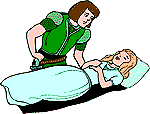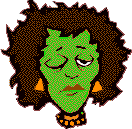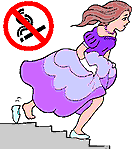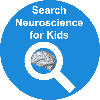|
June 22, 2001
 What causes someone to use alcohol and tobacco? Why do some
people become addicted to drugs? Is drug use learned? Do magazines, TV
and movies influence how people use drugs? These are controversial
questions without complete answers. However, it is clear that drug use is
seen frequently in movies and on TV. For example, one study reported that
of the 200 most popular video rentals in 1996 and 1997, 93% of them showed
people using alcohol and 89% of them showed actors smoking. Another study
of the largest money-making movies between 1988 and 1997 reported that
76.4% of the films showed people smoking. What causes someone to use alcohol and tobacco? Why do some
people become addicted to drugs? Is drug use learned? Do magazines, TV
and movies influence how people use drugs? These are controversial
questions without complete answers. However, it is clear that drug use is
seen frequently in movies and on TV. For example, one study reported that
of the 200 most popular video rentals in 1996 and 1997, 93% of them showed
people using alcohol and 89% of them showed actors smoking. Another study
of the largest money-making movies between 1988 and 1997 reported that
76.4% of the films showed people smoking.  Many of the movies in these studies included those with PG, PG-13 and R
ratings...movies that young children usually do not watch. A new study
published in Pediatrics (June 2001) investigated how often alcohol
and drug use appears in G-rated
animated feature films.
Many of the movies in these studies included those with PG, PG-13 and R
ratings...movies that young children usually do not watch. A new study
published in Pediatrics (June 2001) investigated how often alcohol
and drug use appears in G-rated
animated feature films.
In the new study, researchers from the Harvard School of Public Health
watched 81 G-rated videos. Every G-rated animated feature film that was
released into theaters between 1937 and 2000 was included in the study.
For each film, researchers recorded the number of times alcohol and
tobacco were used, the length of time the drug was on the screen and what
character used the drug.
In the Movies
The five movies with the most on-screen use of alcohol:
- Sleeping Beauty - 174 seconds
- Dumbo - 133 seconds
- Fantasia - 128 seconds
- The Great Mouse Detective - 118 seconds
- Beauty and the Beast - 86 seconds
|
The five movies with the most on-screen use of
tobacco:
- The Three Caballeros - 629 seconds
- Little Nemo: Adventures in Slumberland - 416 seconds
- One Hundred and One Dalmatians - 387 seconds
- Happily Ever After - 374 seconds
- Alice in Wonderland - 323 seconds
|
The following table summarizes what the researchers found.
 |
ALCOHOL USE |
TOBACCO USE |
| # of films | 38 of 81 films | 35 of 81 films |
| % of films | 47% | 43% |
| Duration of use (average) | 42
seconds/film | 2.1 minutes/film |
| Duration of use (range) | 2 seconds to 2.9
minutes | 2 seconds to 10.5 minutes |
 In those films showing the use of alcohol, wine was shown most often,
followed by beer, champagne and hard liquor or mixed drinks. "Good"
characters were shown drinking alcohol about as often as "bad" characters.
In those films showing the use of tobacco, cigar smoking accounted for the
most on-screen time, followed by pipe smoking and cigarettes. "Good"
characters smoked as often as "bad" characters.
In those films showing the use of alcohol, wine was shown most often,
followed by beer, champagne and hard liquor or mixed drinks. "Good"
characters were shown drinking alcohol about as often as "bad" characters.
In those films showing the use of tobacco, cigar smoking accounted for the
most on-screen time, followed by pipe smoking and cigarettes. "Good"
characters smoked as often as "bad" characters.
 In 40% of the movies with alcohol use, the physical effects of alcohol
consumption were shown. For example, some characters staggered, had the
hiccups, or got a flushed face. None of the movies carried a health
message about the possible consequences of drinking alcohol. In 37% of
the movies showing tobacco use, the physical effects of smoking were
shown. These effects included coughing or turning green. In three films
(Happily Ever After, Little Nemo: Adventures in Slumberland, and
An American Tail), characters urged others to stop smoking.
In 40% of the movies with alcohol use, the physical effects of alcohol
consumption were shown. For example, some characters staggered, had the
hiccups, or got a flushed face. None of the movies carried a health
message about the possible consequences of drinking alcohol. In 37% of
the movies showing tobacco use, the physical effects of smoking were
shown. These effects included coughing or turning green. In three films
(Happily Ever After, Little Nemo: Adventures in Slumberland, and
An American Tail), characters urged others to stop smoking.
The researchers also found that more recent movies showed less alcohol and
tobacco use than older movies. Although this is good news, almost none of
the films showed that smoking and drinking can have negative health
consequences. Although it is controversial whether children who watch
movies depicting alcohol and tobacco use are more likely to use these
drugs, it may be important to have a more realistic portrayal of drug
effects on the body. Cartoons are supposed to be funny, but drug abuse is
not.
|


![[email]](./gif/menue.gif)

